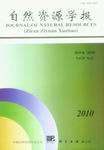Special Column:Celebration of the 70th Anniversary of IGSNRR, CAS
XIE Gao-di, FENG Zhi-ming, SHEN Lei, HUANG He-qing, LI Li-juan, CHENG Sheng-kui
The tracing and research on the evolution, the exploitation and utilization, and the regulatory mechanism of natural resources has always been an important study task and research orientation in the resources and environment study area of our institute (Institute of Geographic Sciences and Natural Resources Research,CAS). This paper summarized the achievements and progress in the study area of natural resources and environmental security of our institute since 1950.From 1950 to 1978, the prime work of the natural resources and environmental security study area of our institute was the large-scale natural resources investigation and integrated scientific research which has gained achievements. These achievements have provided substantial scientific support for the resources exploitation and regional development in China, and made an indelible contribution in the natural resources research area. Furthermore, they also have played a positive role in the systematic accumulation of scientific material and the emergence of the study in resources sciences. In addition, they have laid the foundation for the understanding of the resources and environment and the establishment of natural resources sciences system. From 1978 to 2000, the study orientation of the resource and environment of our institute has made an important conversion. And during the period, integrated regional resources survey and the studies of resources were simultaneously the two key research areas of our institute. And a series of survey reports that have done during this period of time have defined the direction of regional development and have laid the foundation in data for the fully understanding of the natural resources and the integrated research of natural resources in China. After 2000, firstly, our institute has paid more attention to subject system establishment, which promoted the establishment of the system of resources sciences. Secondly, we have laid more stress on the world resources research, therefore, our natural resources survey fields have extended to the global scale. Thirdly, we paid more attention to the mechanism process research, and provided a new space in the theory of some resource and environment fields, such as the capability of resources and environment, the resources flow, the resources security, and the ecosystem service. Fourthly, we paid more emphasis on the technology of resources exploitation and utilization, and we have made substantial achievement both in theory and technology of environment restoration.As we look to the future, the resources and environment study field in our institute will continue to make the national significant strategic demand as our orientation, and we will make the water resources, land resources, biological resources, energy and mine resources and so on as our main study subjects. In a conclusion, we will conduct systematic research work in the following five aspects in order to push forward the establishment and development of the subject of resources: 1) integrated regional scientific investigation and integrated study of resources sciences; 2) the sustainable utilization of land and water resources and its complexity; 3) the flow process of natural resources and its eco-environmental effects; 4) the status of world-wide resources and the national strategic resources security; and 5) the environment restoration mechanism and the renewal and utilization of wastes.
